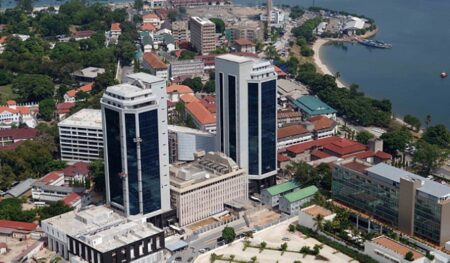The second 20 years Treasury Bond that was auctioned last week by the Central Bank of Tanzania has oversubscribed, again.
The Bank of Tanzania (BoT) was forced to close the trading session as the market gabbled up the high interest rate bond.
The bond had an attractive interest rate of 15.85 percent coupon rate was offered in the 20-year instrument held on Wednesday slightly down compared to 16.21 per cent of the session held in February this year.
The auction was meant to serve as a debt instrument that the government targeted to raise only 117bn/-, local media reported mid week. However, interest for the bond was more than anticipated with the government, through the BoT, racking in a whopping 276.86bn/- that is more than double the targeted amount.
As mentioned this is actually the second 20-year Treasury Bond to be auctioned this year and both had good response, both oversubscribing. The BoT explains that investors are confident in the bonds because the economy is stable ,
These long term Treasury Bonds only started to be issued two years ago and so far only nine have been auctioned, all showing great market interest evident in the oversubscription.
To recap, these long term Treasury bonds are just one of many other avenues that the government takes as options to raise internal revenue. These are referred to as debt instrument which raise funds to finance large development projects particularly infrastructure projects. This is how the government funds power projects, road and railway construction, bridges, ports and airports as well as hospitals and schools too.
The way they work is this, the bond has a long term maturity date, say in this case, 20 years, when the bond matures, the bond holder will be entitled to the face value of the bond which is much higher than the purchase value of the bond earning them a profit.
On the other hand, the government has in turn had, 20 years to regain the amount plus interest from the funded projects such that, after 20 years, the government is able to pay the bond bearer plus interest and retain profit as well.
Actually, the multiplier effect of such projects is to stimulate business growth in general and as a result the government collects more revenue not only from the said infrastructure project but all the related business activities that will pay taxes, fees, fines etc thanks to that particular project.
The yield rates in the 20 years Treasury bonds has been one of the highest offered in long term debt instrument auctioned since January this year. The number of bids received during the session were 440 and 321 emerged to be successful bids.
The institutional investors are commercial banks, pension funds, insurance companies and some microfinance institutions.
The introduction of the 20-year instrument has widened investors’ options and investment opportunities in the debt markets alongside other government securities like the two, five, seven, 10 and 15 years bonds.
Tanzania is the second in the East Africa region to have issued the 20 year debt instrument after Kenya that has been issuing it for a long time.











